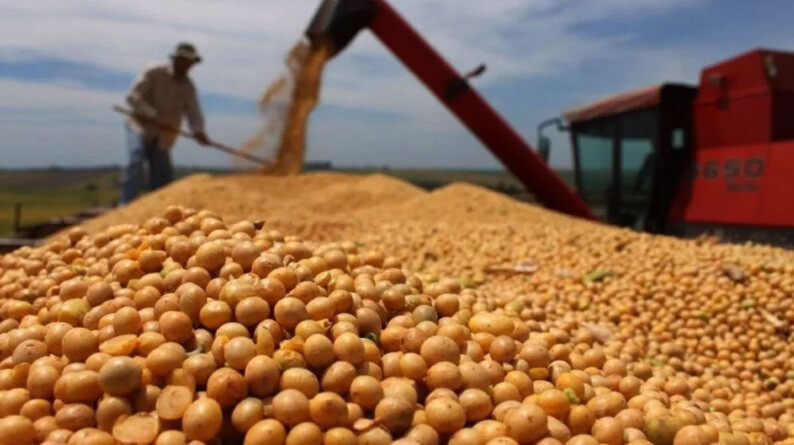
Asunción, Paraguay – Despite recent rains providing some relief to the agricultural sector, Paraguay is expected to experience an inevitable decrease in agricultural production due to the impact of a severe drought. The soybean sector, in particular, has been hit hard, with this year's harvest projected to fall significantly short of initial expectations.
Héctor Cristaldo, president of the Paraguayan Agricultural Producers' Union (UGP), estimates that the 2024-2025 soybean harvest will reach only around 9 million tons, far below the 10.7 million tons initially projected by the union and the 11.2 million tons forecast by the United States Department of Agriculture (USDA). This represents a decrease of approximately 15% in production volume.
"Considering both the reduction in production and the fall in prices, this decrease in harvest represents a loss of between $1.5 billion and $1.6 billion," Cristaldo stated, expressing concern that "this will lead to a decrease in income for the country as a whole of between $600 million and $700 million, not just for the production sector."
Hopes for crop recovery have risen in the last two weeks following nationwide rainfall, particularly in the Chaco region and the northern part of the Eastern region, areas severely affected by the drought. "This rain has boosted the morale of producers, and the crops are showing signs of recovery, leading to a more positive outlook," Cristaldo noted. However, the impact of the drought has already made a reduction in harvest volume unavoidable.
Furthermore, soybean prices have also fallen sharply. While some producers managed to sell at $350 per ton, most transactions occurred at lower prices. The current soybean price is around $330 per ton, significantly lower than the $500-$520 per ton seen in 2023.
The drought has particularly affected the San Pedro region. In this area, where approximately 350,000 hectares are dedicated to soybean cultivation, the harvest yield has fallen below the break-even point. In contrast, other regions such as Itapúa, Alto Paraná, Canindeyú, and Caaguazú have experienced relatively better harvests.
Regarding exports, Cristaldo mentioned, "Product sales have already been secured, but uncertainty remains due to price volatility and changes in international trade regulations, such as the recent tariff increases by the United States."
Meanwhile, the low water level in the Paraná-Paraguay waterway, Paraguay's main export route, is also emerging as a serious problem. Cristaldo pointed out, "For years, we have been unable to operate barges at their maximum capacity, which has increased transportation costs and generated additional expenses for both imports and exports."
In terms of export destinations, Argentina remains the primary buyer of Paraguayan soybeans. This is mainly due to the logistical convenience offered by Rosario, Argentina's main industrial hub, being adjacent to Paraguay.
The expected decrease in the soybean harvest is anticipated to place a significant burden on the Paraguayan economy and is likely to have repercussions across related industries.
[Copyright (c) Global Economic Times. All Rights Reserved.]






























